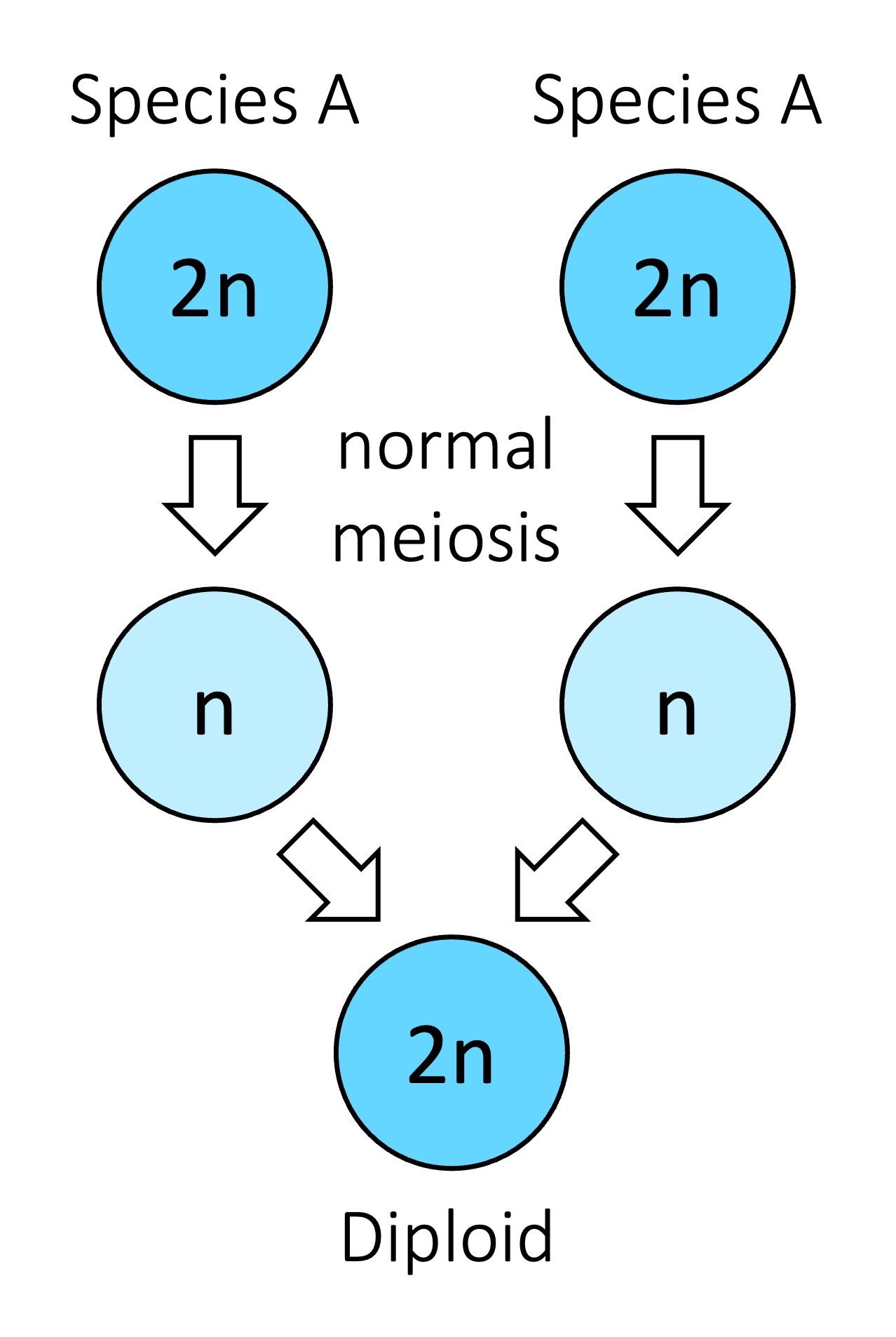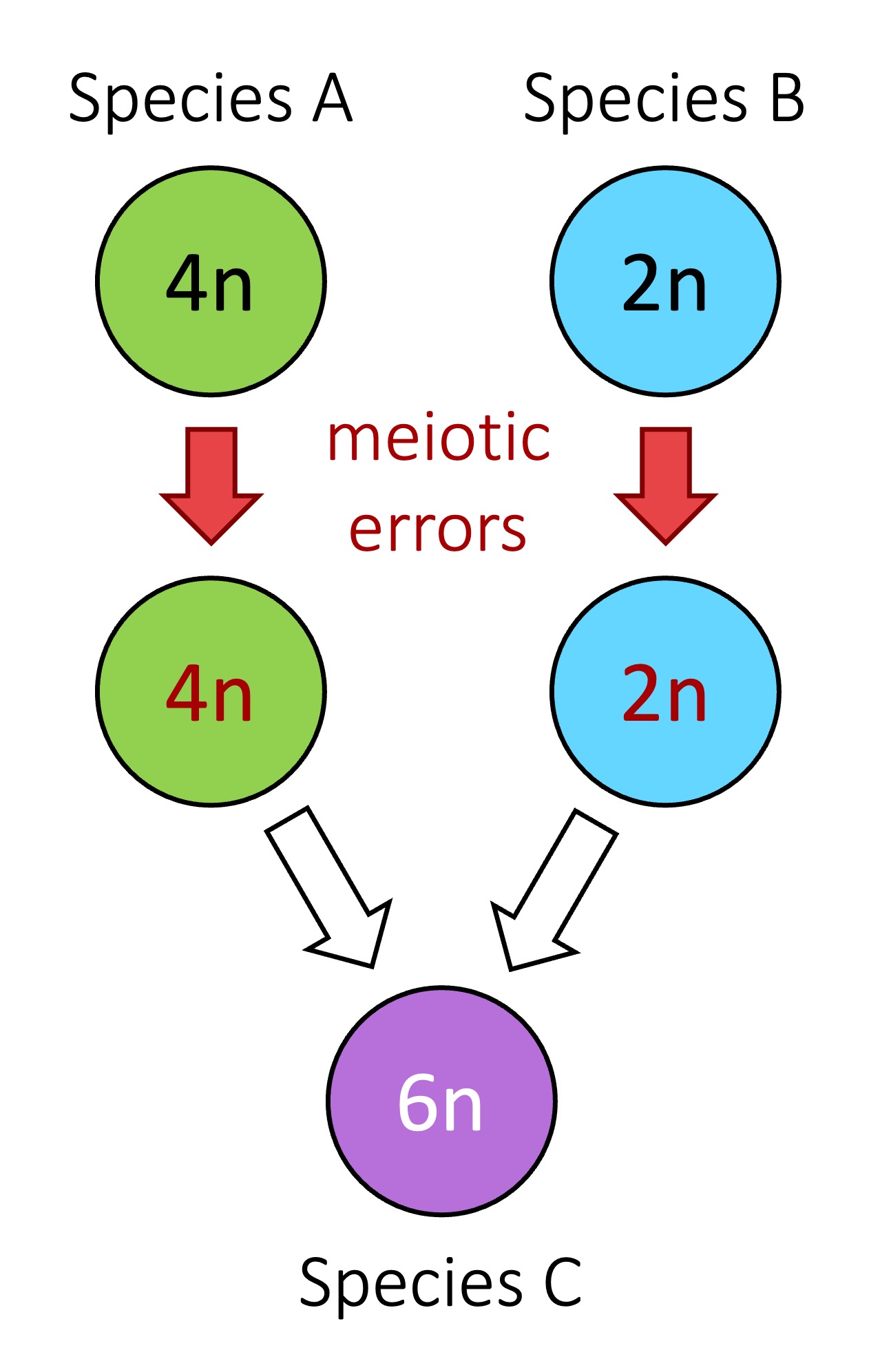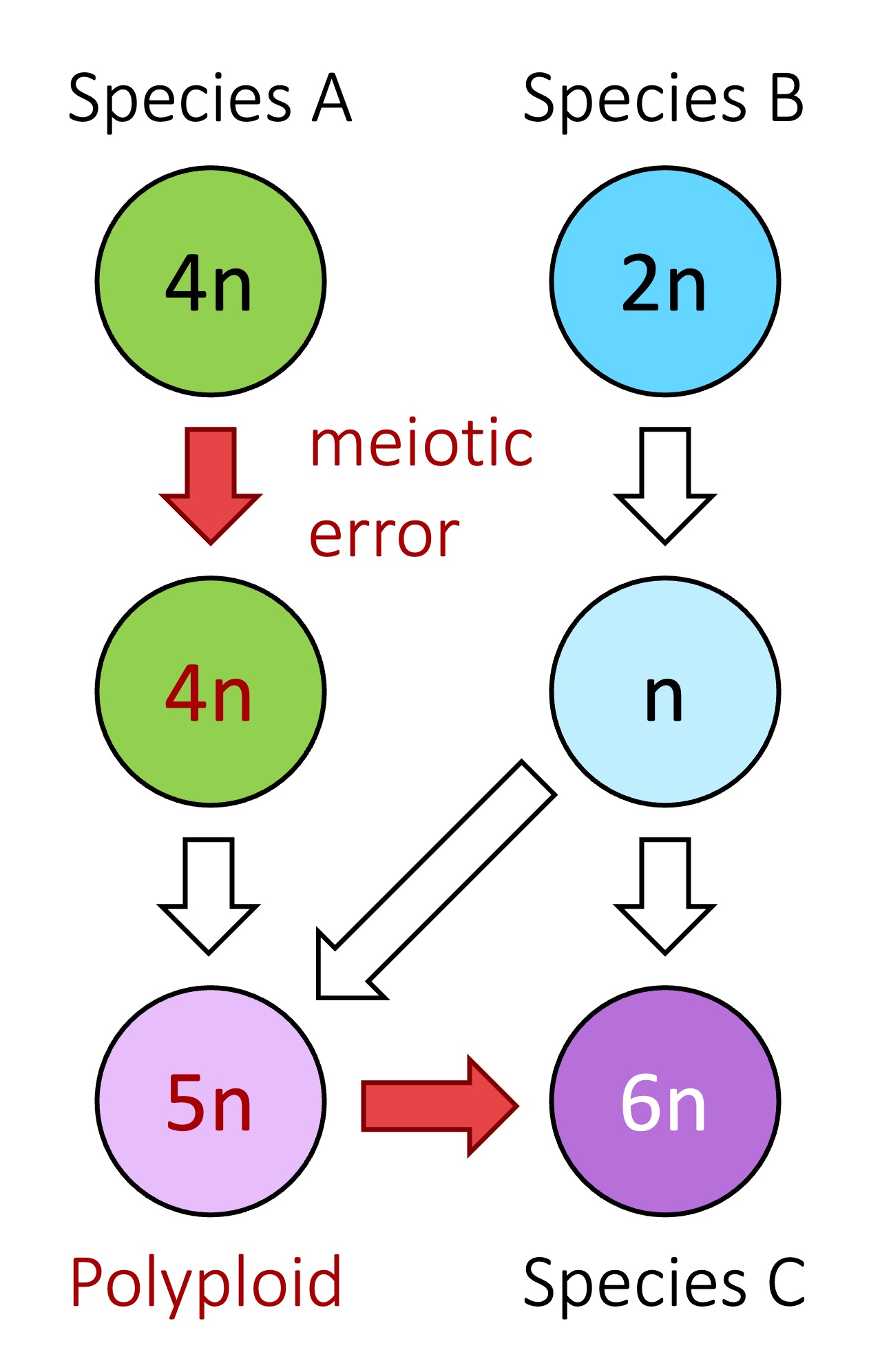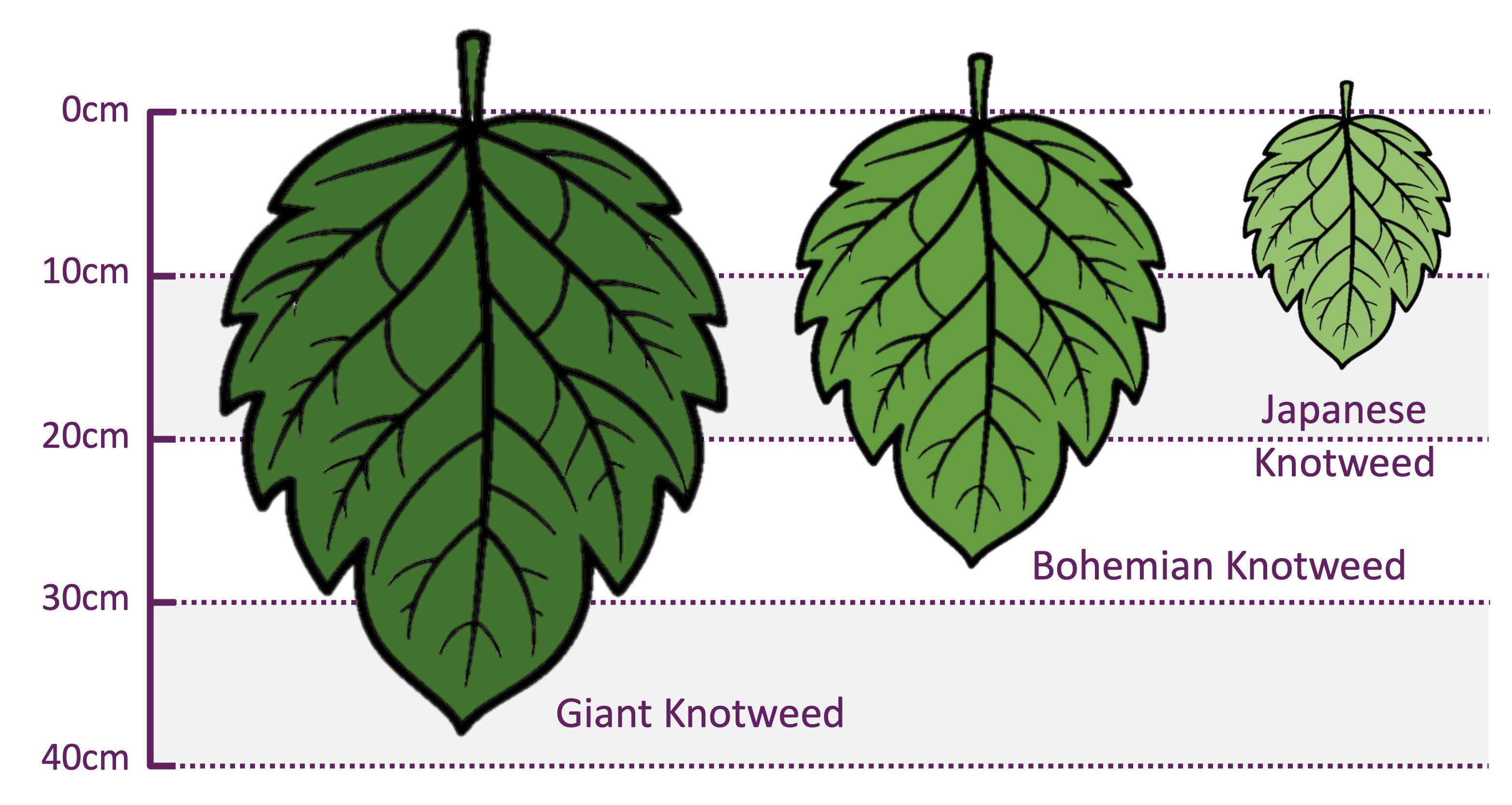

Abrupt Speciation
Speciation is typically a slow process, with genetic divergence occurring gradually following reproductive isolation
-
Genetic isolation is usually caused by the progressive accumulation of point mutations and differential selection mechanisms (genetic drift or natural selection)
However, speciation can occur abruptly if errors in gamete formation and fusion lead to genetically incompatible offspring
-
In this case, genetic isolation is an instantaneous consequence of offspring having different complements of chromosomes (i.e. polyploidy)
Polyploidy is a condition in which an organism has more than two complete sets of chromosomes in every cell (i.e. > diploid)
-
Autopolyploidy occurs when a polyploid offspring is derived from a single parental species (usually via self fertilisation)
-
Allopolyploidy occurs when a polyploid offspring is derived from two distinct parental species (via hybridisation)
Because polyploid organisms require other compatible polyploids to form a separate species, it is more commonly seen in plants
-
Monoecious plants can self pollinate and offspring may be able to reproduce asexually via vegetative propagation
Autopolyploidy
Autopolyploidy occurs when meiotic cells fail to undergo cytokinesis, causing the chromosomal number to double in the gamete of a single species
-
The resulting diploid gamete can then fuse with a normal haploid gamete to produce an infertile hybrid (3n) or fuse with another diploid gamete to form a fertile polyploid offspring (4n)
-
Speciation will result if the polyploid offspring are viable and fertile but cannot interbreed with the original parent population

Normal fertilisation

Autopolyploidy
Allopolyploidy
Allopolyploidy involves the fusion of gametes from two different species (this process is called hybridisation)
-
Hybridisation often occurs where the geographic ranges or ecological niches of two closely related species overlaps
-
Successful hybridisation typically involves both parents contributing diploid gametes formed via meiotic errors (the offspring will be able to produce haploid gametes)
-
However, if only one species contributes a diploid gamete, the F1 offspring may still be able to interbreed with the other species to form fertile F2 progeny
-

Two meiotic errors

One meiotic error
Hybrid Vigour
Polyploid crops typically grow larger and demonstrate improved longevity and disease resistance due to hybrid vigour
-
The combined action of additional alleles results in more robust phenotypes and the masking of deleterious recessive traits
An example of a polyploid crop that demonstrates hybrid vigour is the knotweed plant (genus Fallopia), which is known for it vigorous growth and invasiveness
-
Examples of polyploid hybrids include Japanese knotweed (8n), Bohemian knotweed (6n) and giant knotweed (4n)
Knotweed Polyploidy





